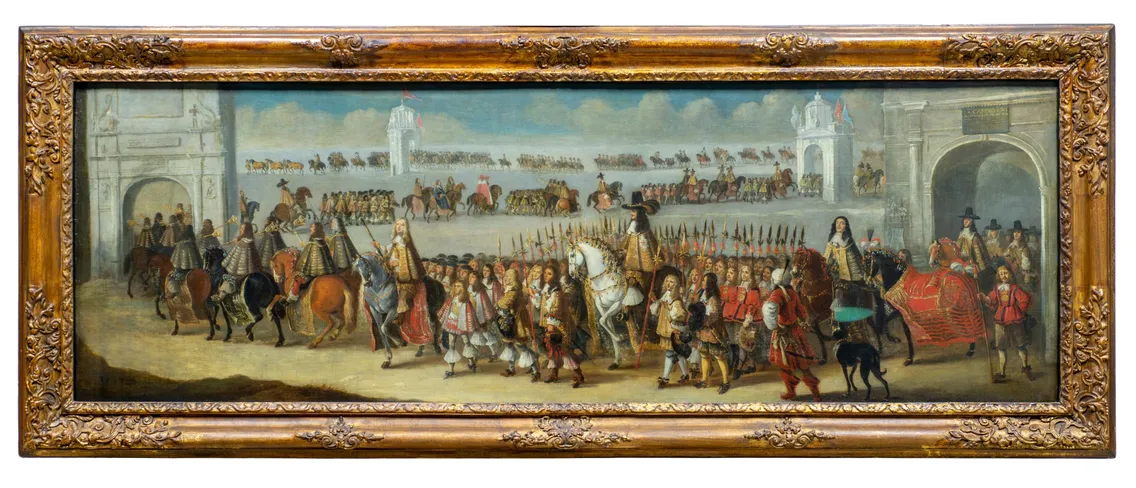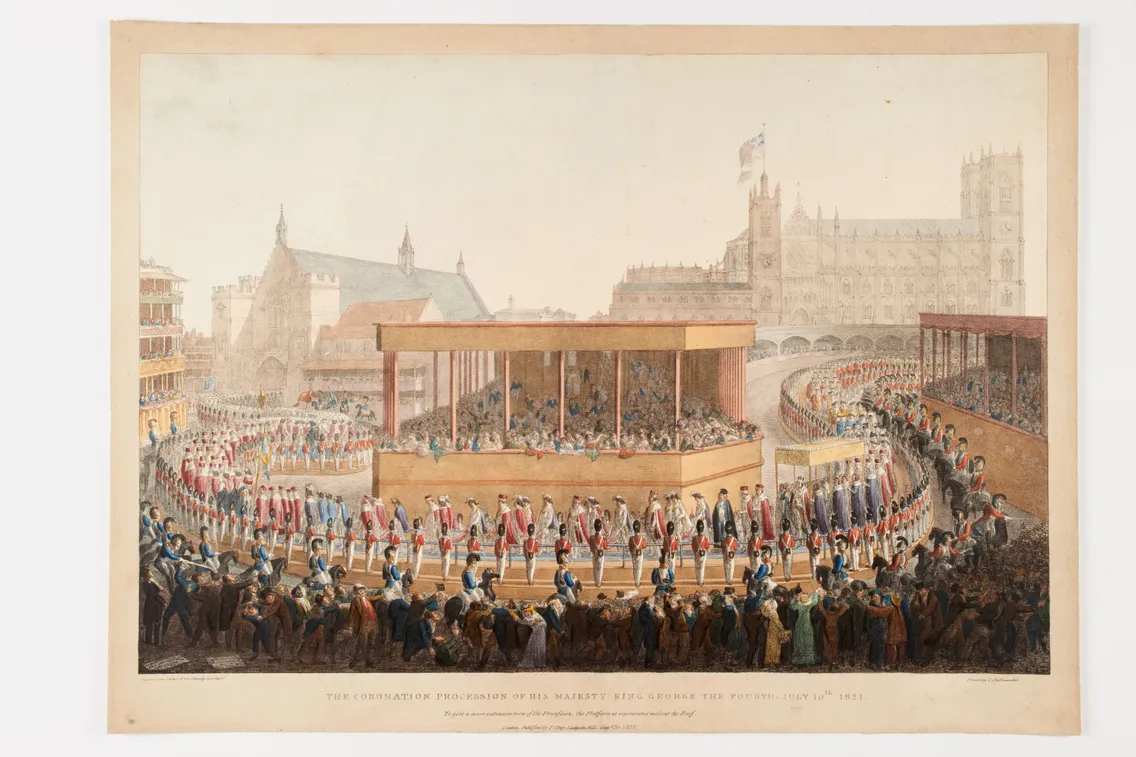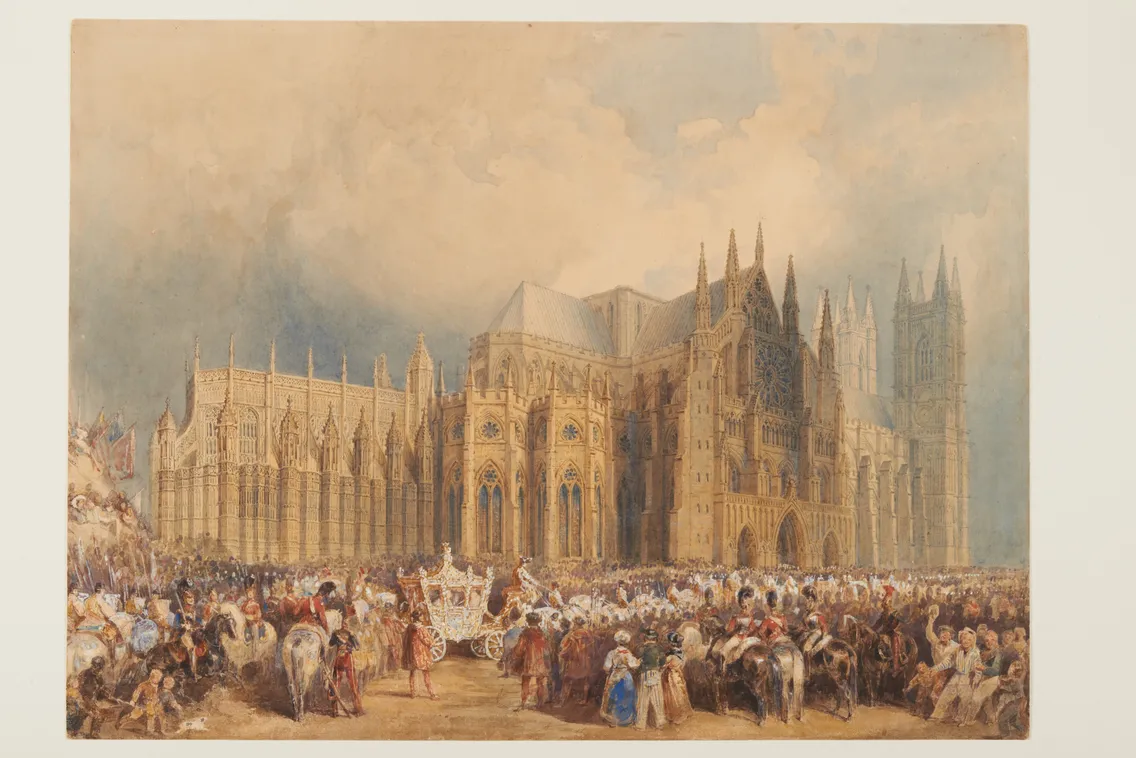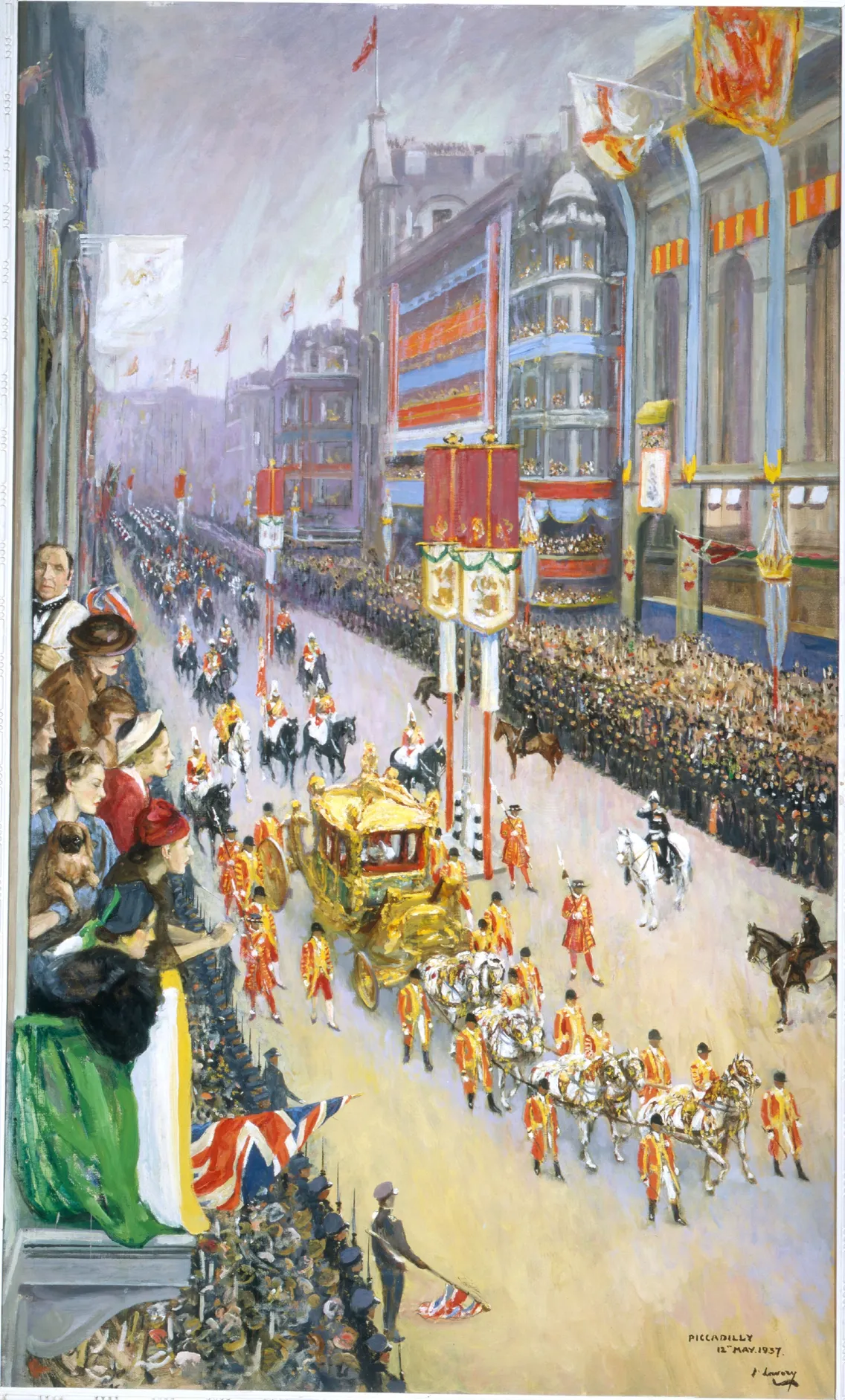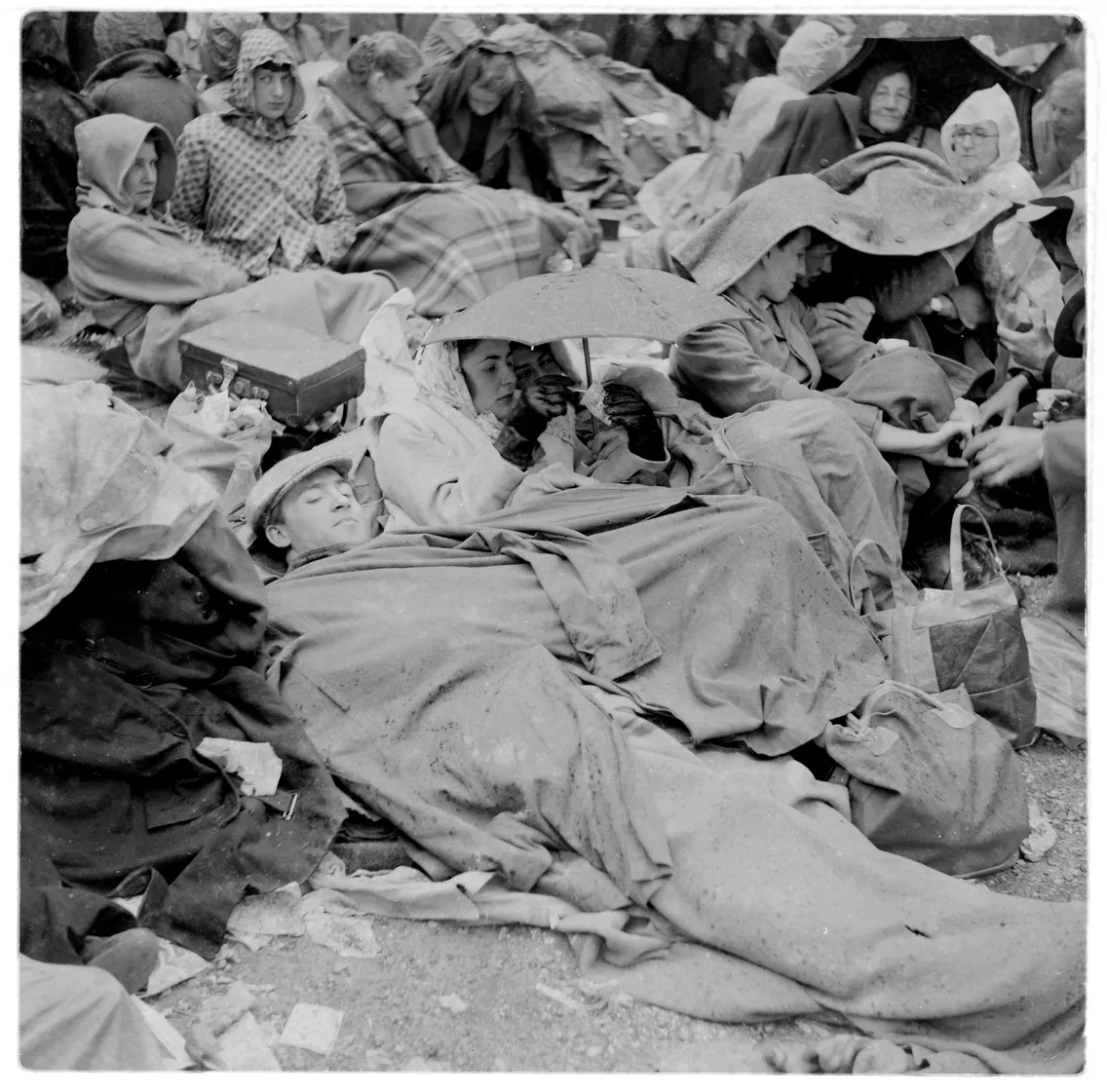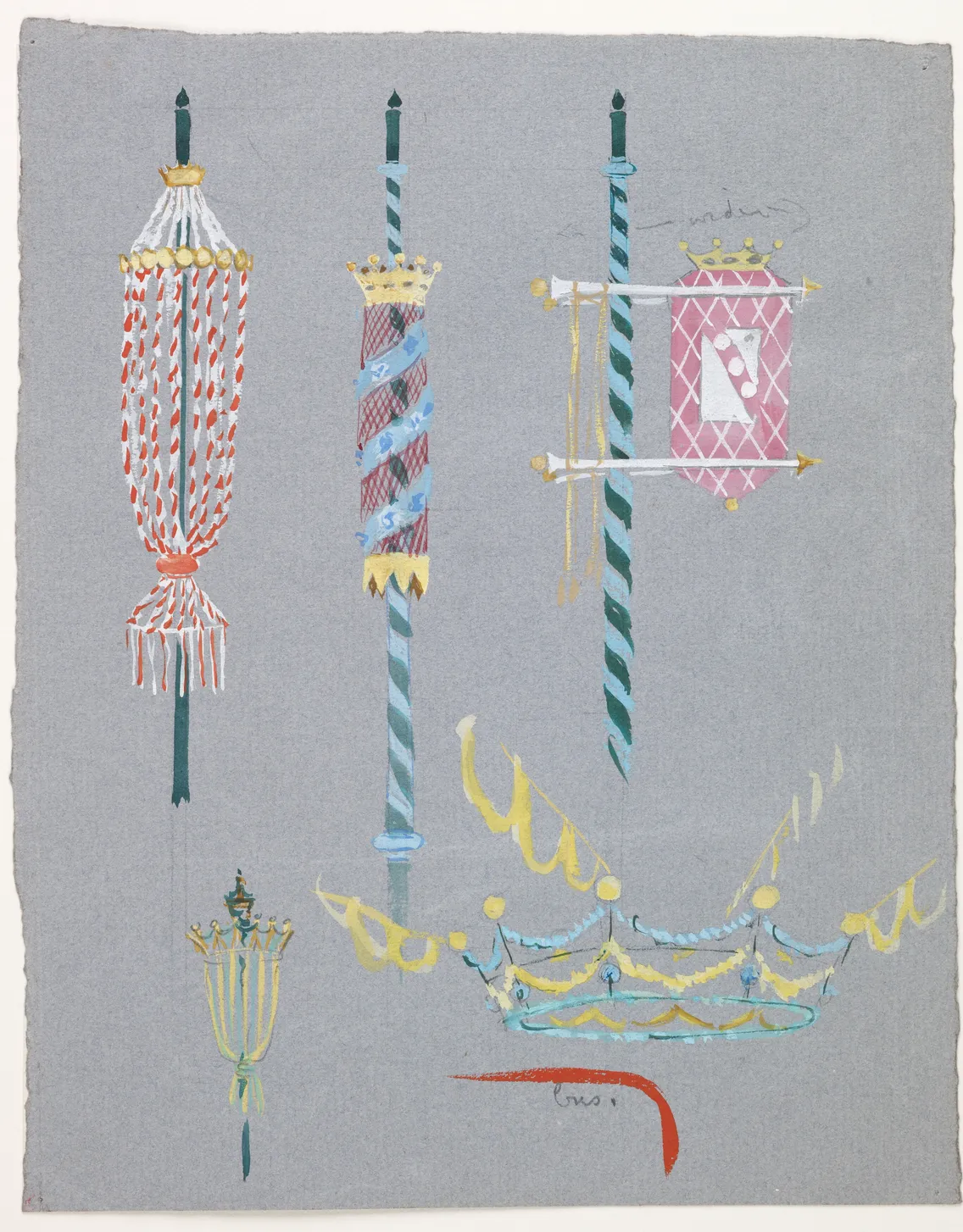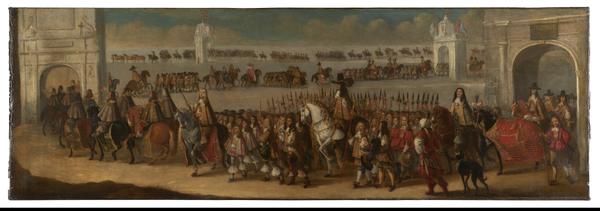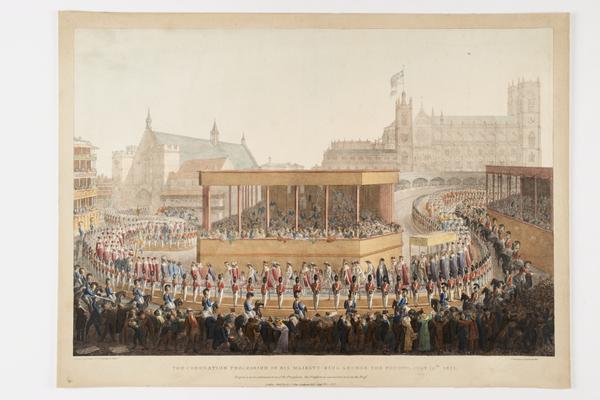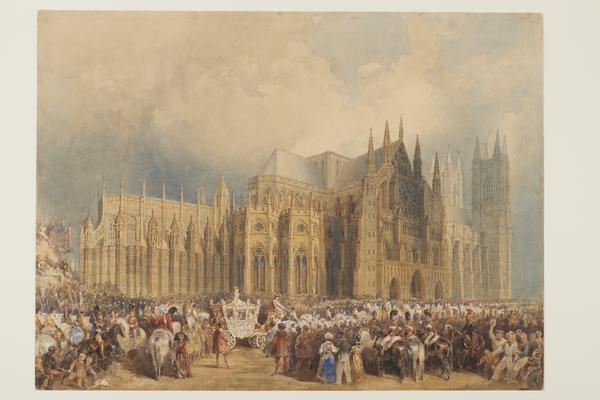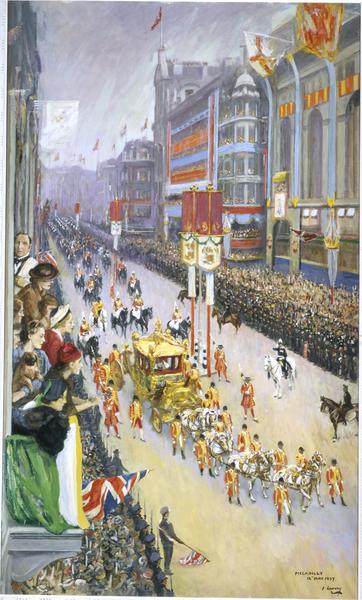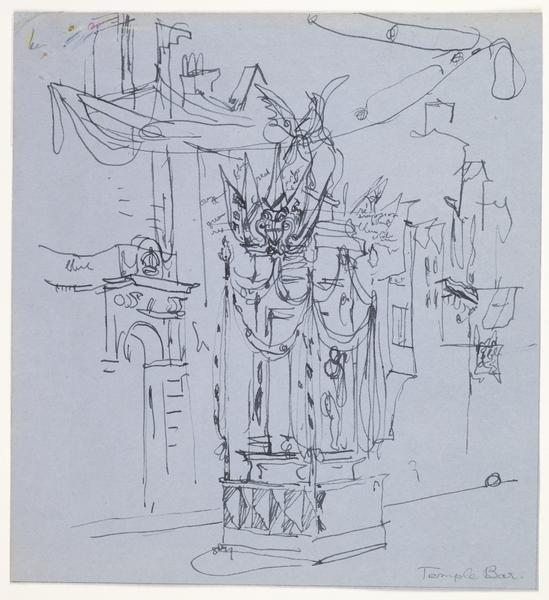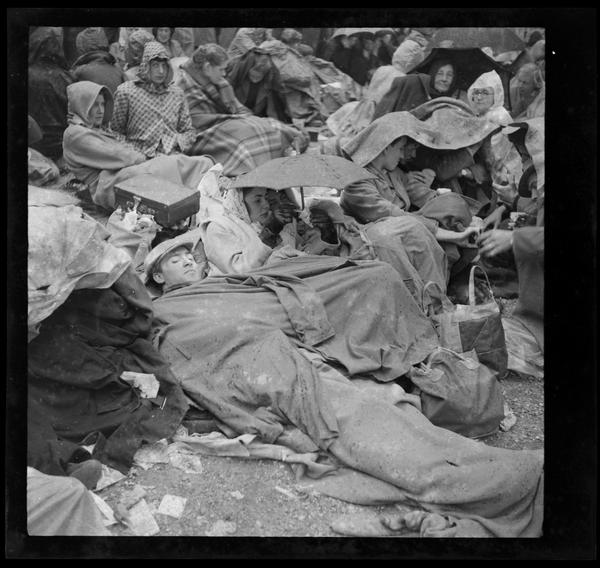Coronations through the ages
Coronations in London date back to at least 1066, and our collection includes paintings, prints, drawings and photographs of some of the most noteworthy ceremonies.
Westminster Abbey
Since 1066
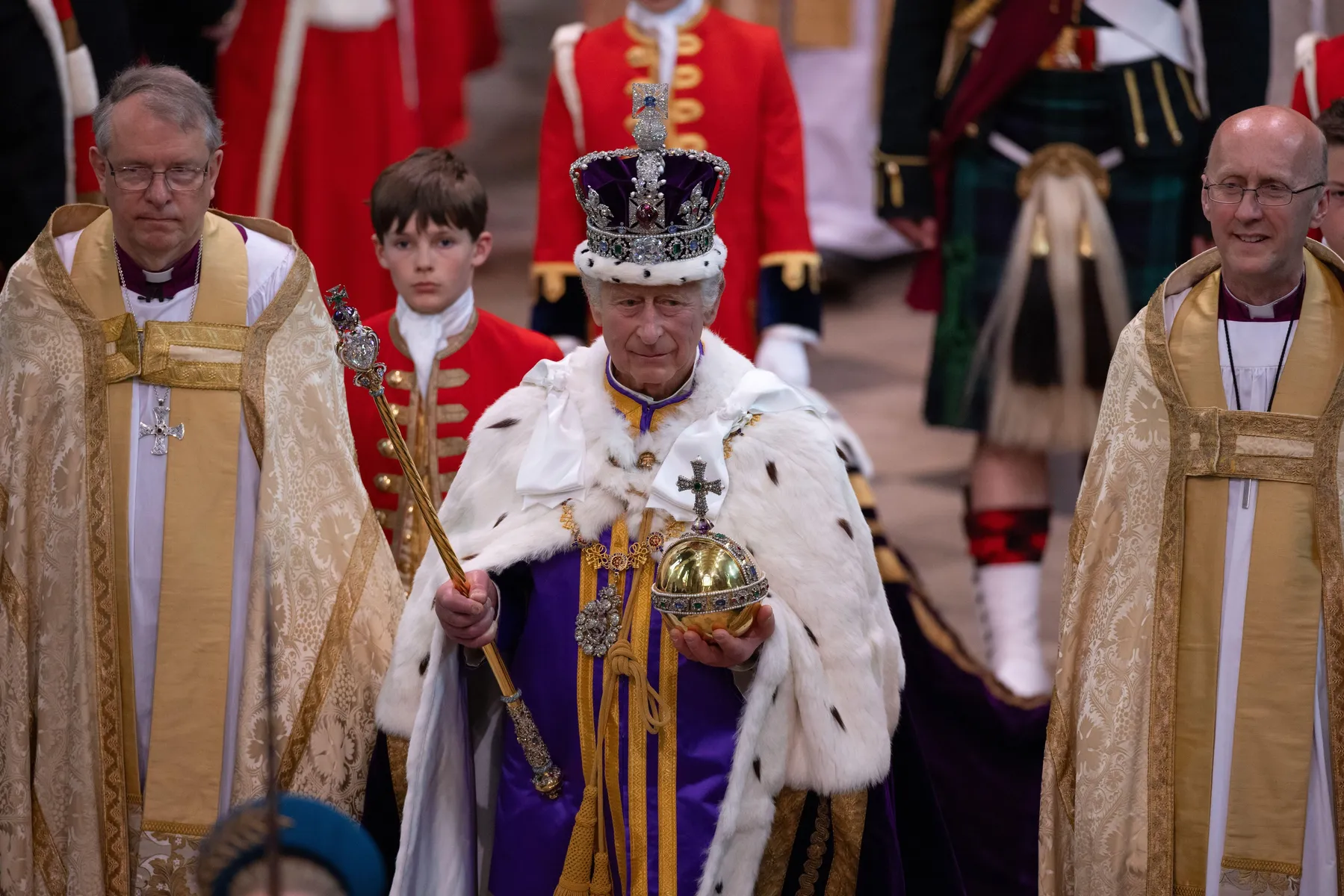
London’s crowning moments
William the Conqueror is the first monarch we know to have been crowned at Westminster Abbey. His ceremony, in 1066, led to riots.
For nearly 1,000 years afterwards, coronations have continued on the same spot, often with bizarre backstories, and intriguing tales from the day.
The ceremony itself has shifted with the times, influencing what we saw at the coronation of King Charles III and Queen Camilla in 2023.
William the Conqueror, 1066
This painting by Anglo-French artist Amédée Forestier captures a particularly violent coronation.
During William the Conqueror’s coronation at Westminster Abbey, the Archbishop of York presented the new king speaking in English, while Bishop Geoffrey of Coutances spoke in French.
When the French-speaking Normans and English-speaking Saxons shouted their approval, the Norman soldiers outside thought the noise was an assassination attempt and began setting fire to houses around the abbey.
Smoke filled the church. The congregation fled and riots broke out. Inside, William and the clergy completed the service despite the chaos and then rode outside to see the aftermath.
Charles II, 1661
Charles II managed to have two coronations. His first came during the English Civil War, after his father, Charles I, was executed in 1649.
To try and take back the throne, Charles allied with the Scots. They crowned him as king of Great Britain, France and Ireland on 1 January 1651. But Charles’ attempt to invade England failed, and he escaped to Normandy in France.
It wasn’t until 1660 that Parliament invited Charles to return as king.
On 22 April 1661, the day before Charles’ coronation, a royal procession took him from the Tower of London to Whitehall.
In the painting above, the Flemish artist Dirck Stoop includes no buildings besides four specially built arches, letting us see the full length of the procession.
This was the last time that the procession through the City of London took place. In 2023, Charles III made a much shorter procession between Buckingham Palace and Westminster Abbey.
George IV, 1821
The extravagant coronation of King George IV was delayed by nearly a year while he tried to prevent his wife, Caroline of Brunswick, from becoming queen.
After years of living separately, George tried to use Parliament to find her guilty of adultery and dissolve the marriage. His failed attempt created enormous public sympathy for Caroline. His government was already unpopular, and since the king had his own relationships with people outside the marriage, he seemed like a hypocrite.
On coronation day, Caroline headed to Westminster Abbey. But having not been invited, she was turned away. As she left, the crowd shouted “Shame! Shame!” at those who would not let her in. She fell ill the following day and died a few weeks later.
The coloured print above depicts King George IV’s procession to his banquet at Westminster Hall following the coronation.
William IV, 1831
William IV was crowned after the death of his older brother George IV in 1830. In contrast to his brother, William disliked extravagant ceremonies. He wanted to skip the coronation altogether, but eventually decided to save money by ditching the banquet.
Despite William’s “penny coronation” being a simpler affair, it established many of the current-day ceremonies, most notably the procession to and from Westminster Abbey in the Gold State Coach.
The arrival of the coach at Westminster Abbey is the subject of this watercolour by George Cattermole. Look closely and you will see the king and queen through the coach windows.
In 2023, King Charles III returned from Westminster Abbey in the Gold State Coach.
George VI, 1937
The coach is also the focus of this view of King George VI and his wife Elizabeth’s coronation procession as it passes along Piccadilly. It was painted by John Lavery, who included himself on the balcony surrounded by women.
The day of this coronation – 12 May 1937 – was meant for another: Edward VIII. Edward succeeded to the throne in 1936. But after only 11 months, he abdicated to marry the love of his life, Wallace Simpson.
When the crown passed to his younger brother Albert (crowned as George), the decision was taken to stick to the original coronation date.
George and Elizabeth’s procession was over six miles long. The Evening Standard reported that 50,000 spectators spent the night in Hyde Park to get a good view.
Elizabeth II, 1953
As Bob Collins’ photographs show, many people camped out in London again to save a good spot for the coronation of Elizabeth II in 1953. An estimated 3 million people gathered on the streets of London to witness the occasion.
Fresh from his success as Director of Architecture of the 1951 Festival of Britain, Sir Hugh Casson was given the role of Consultant Architect for street decorations in Westminster.
These were sketched by illustrator Grace Golden, who was commissioned to paint the procession for the front page of The Star Weekly.



